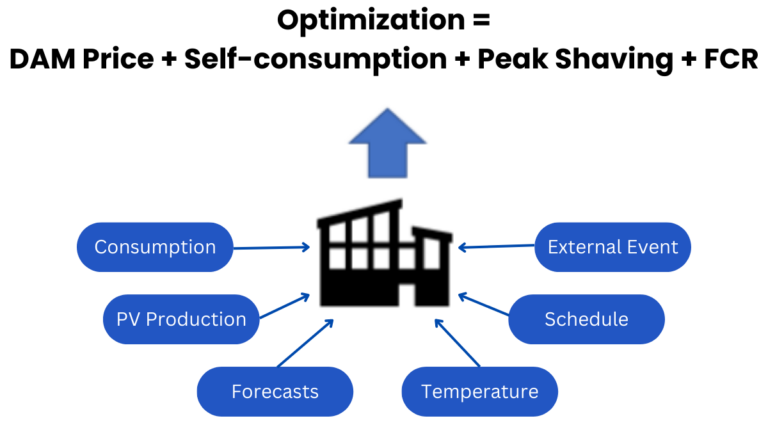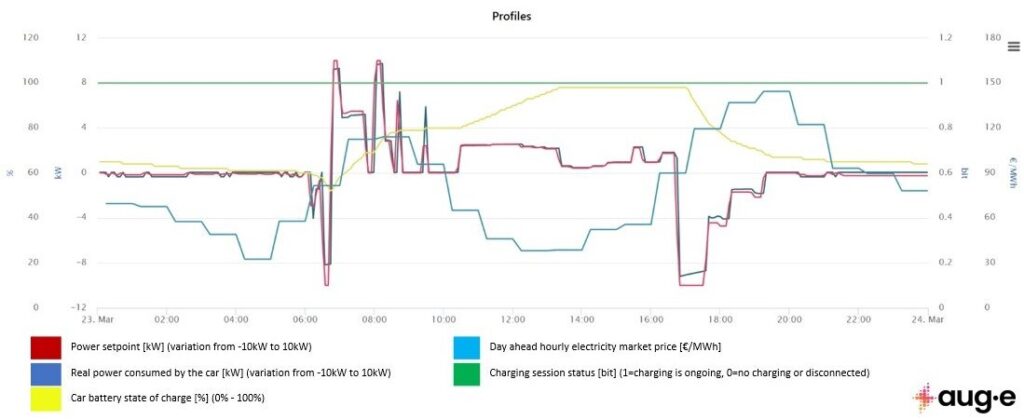The project in figures
- Start/end of project: 01/04/19 – 31/05/23
- Location: Netherlands and Belgium
- Main project delivery to: INTERREG
- Main focus on solar roofs, charging stations and electric vehicles

Overall project summary
Deeldezon is an Interreg project that aims to achieve energy-neutral living environments. It has the ambition to enable 80 solar roofs, 80 bidirectional charging stations and 150 electric shared cars in Belgium and the Southern Netherlands.
The innovative feature of this project is the combination of solar roofs with electric shared cars that store the generated energy by using smart bi-directional charging stations in a sustainable and flexible way and can return it when the demand of electricity is high (Vehicle to Grid – V2G). In addition to the positive effects on the (local) environment, shared cars also offer a solution to socio-economic issues.V2G concept - How does it work?
Vehicle-to-grid (V2G) is the core of Deeldezon. It is a concept where electric vehicles (EVs) can be used as a means of energy storage and delivery. This technology allows EVs to discharge energy to the grid when there is high demand and charge during times of low demand.
This not only benefits the grid but also provides financial incentives for EV owners. V2G is made possible through bi-directional charging technology, which allows for power to flow from the EV’s battery back to the grid. By utilizing the energy stored in EV batteries during peak demand periods, V2G can help stabilize the grid and reduce the need for fossil fuel-powered plants.
In addition to the environmental benefits, V2G provides a financial incentive for EV owners. By selling the stored energy back to the grid during peak periods, EV owners can earn money and potentially offset the cost of vehicle ownership. V2G also has the potential to provide grid services, such as frequency regulation, which can further increase the financial benefits for EV owners.
Aug·e contribution & services
Aug·e provides the cloud EMS services to maximize the values laying within the innovative green electric car-sharing solution. By using various meta-data and on–field real–time–measurements data, the algorithm will optimize within a mix of stacked values as illustrated below:

Effects
Some of the benefits are the following:
- Income: generate money by buying and selling energy through charge-discharge cycles (Principle of Arbitrage)
- Flexibility Trading: a concept in the energy market that allows commercial and industrial consumers to monetize their energy flexibility
- Grid Stability: thanks to the Frequency Containment Reserve (FCR), grid operators maintain a reserve of generation or demand resources that can be quickly activated to bring the frequency back to its nominal value in case of a disturbance.
- Prevent grid congestion: balancing and maximizing the self-produced energy consumption by load.
8 Partners
The electric mobility market is a complex ecosystem that involves various stakeholders, from vehicle manufacturers to charging infrastructure providers to energy suppliers. All play a critical role in creating a sustainable and effective electric mobility market. As the market continues to grow, it is essential that these stakeholders continue to work together to address challenges and create new opportunities for growth and innovation.
By turning EVs into mobile energy storage units, we can unlock new opportunities for balancing the grid, increasing renewable energy penetration, and reducing the overall carbon footprint of transportation. At a first glance it looks like a magic trick!
Tawan Demesmacker – Customer Success Manager
Results
Within the “Deeldezon” project there is an opportunity for demonstrating the use of V2G vehicle as a mobile battery (battery on wheel) combined with extensively data driven and cloud based smart charging control to improve the EV shared car use cases which will naturally lead to increase the revenue and lower the constraints on the future electricity network. Different control behavior can be suggested by tweaking optimization parameters which are constraints for the model, the results are illustrated below for the public shared car.
In this picture, one can notice a full day parking for a shared car (23/03/2023), with a control behavior based on “Arbitrage” combined with “Self-consumption” and time constraint (80% Soc between 9am-5pm). Meaning that, it will try to charge at the lowest electricity price while considering time interval for keeping a certain state of charge and solar panel’s productions at the same time during the day.

Next Steps
There are still challenges to widespread adoption of V2G. These include the need for bi-directional charging infrastructure, as well as concerns about the impact on battery life and the need for standardized communication protocols between EVs and the grid.
Despite these challenges, V2G represents an exciting opportunity for the EV industry to not only provide clean transportation but also contribute to a more sustainable and stable grid. As the technology continues to develop, the aim of Deeldezon project is to accelerate this process. And we believe that V2G will be a key component in the transition to a low-carbon energy system in the future.
Have a look at the project here: https://www.deeldezon.eu/english/
